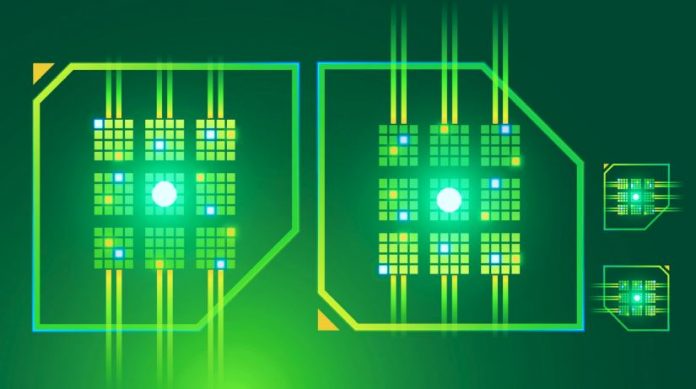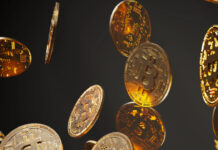
A non-fungible token or NFT is a kind of unique digital certificate, established via blockchain, that defines the originality and uniqueness of digital assets. An acronym for “non-fungible tokens,” NFTs attracted attention after sums of millions of dollars were used to buy such assets on the Internet.
A non-fungible token or NFT is a type of cryptographic token used to represent a digital artwork, identifying it as the original and unique artwork. This art can be an image, a gif, a song, or some other type of digital file, and unique digital items such as digital collectibles, collectible cards, and game items.
This term has been gaining more and more popularity and impacting several markets, such as the visual arts and music markets. For digital artists, NFTs are a new way to grant authorship and exclusivity to their works, and to monetize and engage the public. For investors, tokens are digital assets that can appreciate in value over time and with collective perception. NFTs have also caused a lot of environmental impact, by energy consumption, since they operate through blockchain technology.
The tokens that circulate most on the blockchain are not exactly contracts. They are “payment tokens” – the cryptocurrencies, such as bitcoin and ethereum. Like a virtual database, the blockchain creates a new record each time a bitcoin changes hands. This ensures that every bitcoin fraction in your digital wallet belongs to you, and only to you, until the moment you decide to sell them (or buy something with them). NFTs, as a rule, are traded on the ethereum blockchain network, and, like cryptocurrencies, are stored in digital wallets.
“Token” is like an electronic key, which works to generate a temporary password so that an individual can perform something, such as financial moves, more securely. In the context of NFTs, “token” refers to the name of a record of the digital art. In turn, “non-fungible” means that the assets are unique and irreplaceable, i.e. unique digital assets.
Therefore, non-fungible tokens act as a cryptographic seal and can be used to prove the authenticity of assets in virtual environments. Some define NFT as a kind of contract on the blockchain that guarantees that a certain file is original and that a certain person is officially its owner.
Many compare non-fungible tokens to collectible cards, like those sports or cartoon collections. Once you have a card, you can collect it, sell it, or trade it. This all depends on its rarity and the value assigned to it by society at the time.
Non-fungible tokens have also given birth to a new universe: that of crypto art, which is rare digital artworks associated with unique NFTs.
This leads us to question what is the real value of an image in the digital environment since we can reproduce it countless times even using screenshots. NFT is based on the idea of digital scarcity, allowing you to buy and sell goods as if they were physical objects. The non-fungible token places the person as the owner of the digital asset. And this “ownership” cannot be copied, as it is protected by blockchain technology.
In the universe of physical objects, such as works of art, this would be like having the original of a work or the artist’s signature. Everyone can have a copy or a replica, but only one individual has the original of the work.
Several NFT marketplaces have emerged for people to trade NFTs, such as OpenSea and Rarible, which works as an online art gallery that allows the trading of digital item, NFT artwork, or any digital work. To help with this, cryptocurrency and NFT Marketing Agencies are now available (see more here) with a range of growth packages and powerful marketing tools to help you reach that all-time high. Then, all you have to do is sit back and focus on the other aspects of your business!
How does NFT work?
NFT stands for non-fungible token. Let’s go in parts: fungible is a synonym for “interchangeable”, i.e. something that has equivalents out there. Think of a $2 bill; you can exchange it for two $1 coins. With non-fungible things, this does not exist. There is only one single item, one of a kind - that is a unique piece of art, so it cannot be replaced.
Tokens, on the other hand, are a security key that serves as a certificate of digital authenticity. They are a guarantee that something (real or virtual) belongs to a person – and only to that person. Each token works like a key to open a safe. But each time someone opens the safe, the key changes. This is because, instead of being written contracts on paper, digital tokens are registered in another kind of notary: the blockchain. The function of this system is to ensure that tokens are uncopyrightable, but at the same time transferable.
Smart contracts consist of computer protocols of digital nature that have the same purposes as traditional contractual instruments, which are established between two parties. Unlike paper contracts, the digitally created format cannot be tampered with or lost, and is self-executing in nature.
One NFT is not the same as another, both in value and in the properties of the token itself. Each token has a digital hash, that is, its own versions – each function converts letters and numbers into a cryptographic phrase – which distinguishes itself from all other tokens of its type.
This characteristic allows NFTs to act as a proof of origin. There is increasing recognition that there is value in proving ownership and authenticity of intellectual property by making each unique token, such as artwork and in-game tokens.
In the world of games and collectible cards, NFTs are also called “digital collectibles”.
As such, an NFT registration turns basically anything in the digital universe (a song, a graphic artwork, or even a tweet) into a unique, exclusive asset with authenticity secured by an immutable blockchain, like cryptocurrencies.
Speaking of blockchain, the use of this technology in asset registries also makes NFT tokens immutable. If we think of fungible as something that can be spent or consumed, we contrast with non-fungible the concept of tokens that are also eternal.
At first glance, it is a somewhat abstract and complicated concept, so we also need to understand its technological basis: blockchain.
What is Blockchain?
NFT is based on blockchain, the same technology that makes cryptocurrencies (such as bitcoin) secure. Blockchain can be explained as a public ledger (an accounting book) that keeps track of currency transactions. Since blockchain is a network that works with blocks that always carry a fingerprint, the next block will also contain the fingerprint of the previous one, plus its content, and, with these two pieces of information, generate its fingerprint; verifiable by all.
In other words, the blockchain works like a database that can be accessed from any computer. Each new piece of information is stored in a new block that is linked to other existing blocks. This forms a chain of blocks of data called a blockchain, or digital ledger.
The data is stored linearly and chronologically, always directed to the end of the chain. Each block has a code called a hash and also shows the hash of the block preceding it. The hash is created from a mathematical function that transforms the digital information into a sequence of numbers and letters. Therefore, if any block is edited, the hash changes, and subsequent blocks become invalid.
Most NFTs run from the blockchain called Ethereum, a platform on which the cryptocurrency is Ether (ETH).
When did NFT become popular?
The biggest example of the popularity that NFTs have caused is the work “Everydays: the First 5000 Days” by American digital artist Mike Winkelmann, known professionally as Beeple. The artwork was bought for more than $69 million, making Beeple the third living artist to make the most money by selling a work.
The current wave of the NFT boom has proven that literally anything can be tokenized. Just as the video of famous British artist Banksy’s work was burned during a live broadcast and then sold digitized as NFT for $380,000, so too was the Nyan Cat meme (sold as NFT for $580,000) and the first tweet in history, made by Twitter CEO Jack Dorsey in 2006 (and sold for $2.9 million via NFT in March 2021).
Another great example of NFT purchases is the NBA Top Shots platform, which sells digital ownership of videos of shots of the games framed by a kind of virtual card. A video, in this case, has a limited number of “owners”. The most exclusive ones, made for one to three owners, reach US$250,000; the lesser ones, with thousands of units for sale.
The NBA’s income from this is estimated to be around $700 million. The videos are on the Internet for anyone to see, and “ownership” of one does not give the owner the right to sell it for a TV commercial, for example (only the NBA can do this).
Another example that made NFTs popular came from the rock band Kings. The Americans of Kings of Leon became the first band to release an album on NFTs – The band’s latest album generated $2 million. Those who purchased tokens for the album When You See Yourself, besides having access to exclusive products, can buy the right to attend the band’s next concerts from the VIP area.
The NFTs proposal sounded like music to the ears of artists and collectors. The technology behind the blockchain, after all, guarantees the authenticity of a work or product, since the blocks are traceable and cannot be easily defrauded. Thus, it is possible to confirm provenance – and exclusivity – to the buyer; two pillars of the art market that were difficult to guarantee in the digital medium.
In December 2017, virtual cats Cryptokitties from Canadian company Dapper Labs debuted as digital collectibles, functioning basically like Pokémon cards of the Bitcoin Era.
CryptoKitties is a game that has already been quite successful and caused controversy. In it, users can buy and trade virtual cats and breed them on the blockchain. One of the most expensive cats cost approximately $170,000.
American youtuber Logan Paul created artwork of himself holding Pokémon cards and tokenized it. To buyers, he determined that a stock of the smallest unit, i.e. only three thousand units cost 1 ether (ETH) each; he made over $5 million.
Singer Grimes created a set of digital artworks that went up for auction, and between some of the unique pieces with non-fungible tokens and others with thousands of copies available, the Canadian artist sold about $6 million in a single event.
The classic meme “Deal With It” was registered as a digital asset and auctioned off by the NFT Foundation. With bidding in ether. The meme trading generated 15 ETH, or $22,000.
There seem to be no limits to the NFT art market – even intangible things can be sold in NFTs work.
What was the first NFT?
The launch of the first NFT was in 2012, with the introduction of Colored Coins, or Bitcoin 2.x, created on the Bitcoin network to enable, represent, and manipulate immutable digital resources on Bitcoin transactions, but the most common example of an NFT is the ERC-721 standard that operates on the Ethereum blockchain network.
There are other standards, such as ERC-1155, developed by Enjin as a new standard to define video game tokens, that also operate on the Ethereum network.
The emergence of Ethereum has led to the transfer of these Bitcoin-centric projects to Ethereum’s virtual machine, leveraging more of its smart contract layer resources. When CryptoPunks and later the “CryptoKitties” virtual cat trade came on the scene in late 2017, the NFT scene exploded and drew media attention.
In short, NFTs have spread across the myriad possibilities of the digital universe and various markets have taken advantage of the tokens. Games have not been left out either and are already rehearsing the possibility of collectible items that can be valued over time.
Non-fungible tokens bring a reflection about the real value of a digital asset, after all, what makes us want to own something that can be easily reproduced? Everything indicates that the value of an NFT is defined according to the collective’s perception of its authenticity. It is the logic of scarcity and the need for ownership of something authentic and exclusive.
The popularity of non-fungible tokens (NFTs)
There are many examples of how NFTs are being used today. So we have separated some of them for you to better understand what NFT is.
Remembering that this is already part of the present, non-fungible tokens are a reality and are acquiring more and more supporters for the digital market.
Art
Digital art has rocked the crypto world in recent months. Combined with the digital property rights of NFTs (verifiable governance) and perpetual copyrights for artists who create NFTs is an impressive improvement on the current system.
Most recently, global auction house Christie’s auctioned an NFT-based artwork by Beeple, the leading NFT artist by sales volume.
Digital and Trading Cards
Sorare and NBA Top Shot are two of the most popular markets for sports cards and collectibles.
Sorare cards can be used in Sorare’s virtual soccer leagues while NBA Top Shot, from Dapper Labs, is developing a game using its NBA NFTs.
Other tradable card games include Gods Unchained, similar to strategy games such as Magic: the Gathering or Yu-Gi-Oh.
Origin tracing and digital certificates of authenticity
Many items, especially collectibles and high-value items, come with digital certificates. These certificates are either stored as paper records or digital PDF copies.
The benefits of digitizing these certificates and issuing them as NFTs means that anyone can verify the authenticity of the digital certificates and no one can alter the information or lose the document.
Treum, backed by ConsenSys, has already introduced a pilot program with the NBA to authenticate collectors’ items, such as jerseys worn by players, sold during an NBA game at live auctions.
While there is always the possibility that a physical artwork can be counterfeited, digital NFTs can act as a better and more automated certification than other existing practices.
Game Items
Axie Infinity is a decentralized application (dapp) of gaming NFTs on the Ethereum blockchain. Players can create, fight and trade digital creatures called Axies.
Game assets are already digital in nature, so creating them as crypto-assets that people can own has several benefits. There are several game studios developing games operated on the blockchain, including Blockade and Horizon.
Axie Infinity, a Pokémon-style game, issued creatures called “axies” as NFTs, used in the game’s battle feature.
Finally, there are several platforms, such as Enjin, that are developing their own platforms to facilitate game development, including issuing game assets.
Content
Music, blogs, tweets, memes and other digital content or digital files can be issued as NFTs. While they do not make the content valuable, they present unique opportunities for digital governance and copyright on the blockchain (“on-chain”).
While content distribution remains free for blogs or music, NFTs provide unique monetization opportunities for funding content or selling a blog/song, just as it was common to buy rare edition vinyls or books.
The decentralized publishing platform Mirror allows writers to fund blogs and sell them as NFTs.
Other experiments include selling the band Kings of Leon’s album as NFTs, providing additional value, including lifetime concert tickets or experimental and exclusive album art.
Tokenized luxury goods
Another interesting sector that the NFT market can impact is luxury goods, which are always the target of attacks by counterfeiters trying to replicate the products. One example is fine wines. One interesting project is OpenSea.
In February 2020, the platform entered into a collaboration with WiV Technology, a unique asset blockchain-based technology created for wine producers and merchants, to provide support for ERC-721 standard tokens that represent physical bottles of wine.
This is the first time a physical asset has been integrated into the OpenSea platform. As these platforms evolve, NFTs will be used to verify unique physical items.
Financial products
Many types of financial products are not exchangeable. For example, your mortgage is unique to your home, size, interest rate, and more. Any simple financial contract can be issued as a non-fungible token and stored on blockchain.
The real estate industry, for example, suffers from several barriers to entry, especially for younger people.
The application of blockchain technology has the potential to radically change this industry for the better by broadening access, transparency, and easing complex transaction processes.
Nori has tokenized carbon removal credits as NFTs, where each token acts as a certificate representing carbon removal.
Event Tickets
NFts can also play a role in combating ticket fraud if each ticket is registered on the blockchain as an NFT.
With blockchain-registered tickets, they are linked to digital counterparties. This means that you can sell them through an online brokerage by simply transferring the token. The brokerage certifies that you don’t overcharge, eliminating the risk of cheating.
A recent example was when the Union of European Football Associations (UEFA) announced that it will use a blockchain-based ticketing system to distribute passes for Euro 2020 to fans’ cell phones.
The digital tickets will produce QR codes via Bluetooth when fans are near the stadium, in an attempt to prevent ticket counterfeiting.
Tweets and social media posts
NFTs present a better way to turn media into personalized content in nonfungible tokens . For example, the sale of social media posts, such as tweets, are the most recent use case for NFTs.
You probably already know this, but Jack Dorsey, CEO of Twitter sold his first tweet published on the platform in the form of an NFT.
The Twitter CEO shared a link to a digital platform called “Valuables,” which facilitates the buying and selling of “autographed” tweets by their creators.
This new use case for NFTs opens up the possibility of selling iconic moments of expression or culture on the Internet.
Crypto art, digital art, and environmental impact
Although it points to benefits for artists, a new risk has also been born: someone can create an NFT, or steal NFTs for a work even before the artist or even impersonate him. for the work even before the artist or even impersonate him. And the downside is not just this, there are also serious environmental impacts from non-fungible tokens.
NFTs consume a lot of energy. The major markets – such as Nifty Gateway and Superare – use the Ethereum cryptocurrency that keeps a secure record of transactions through a process called mining, similar to the system that verifies bitcoins. This involves a network of computers and power consumption.
Several artists have brought the debate to the fore. Architect Precht created three digital artworks with the aim of selling them using blockchain technology, but gave up when he calculated what this would consume in electricity and found that it would be the equivalent of the energy he would use in 20 years.
An article published in Quartz highlighted the carbon footprint, showing that over its life cycle, an NFT can accumulate a footprint of 211 kilograms of carbon dioxide, the equivalent of driving about 825 kilometers in a gasoline-powered U.S. car.
At an event hosted by filmmaker and singer Valérie Lemercier, where six non-functional tokens were sold, 8.7 megawatt-hours of energy were consumed, equivalent to two years of power usage by her studio.
A friend of Lemercier’s, who assisted her in researching the energy usage impacts of NFTs, created Cryptowart.WTF which selects a piece of crypto art and presents a rough estimate of the energy usage and emissions associated with it.
Although it has received a lot of criticism for somewhat blaming the artists, the platform has made the debate about the impacts of NFTs stronger. With this, many artists have increasingly sought and encouraged a way to use renewable energy to trade and sell the non-fungible tokens, there is even a guide that describes and suggests processes and platforms to make NFTs less unsustainable.
Conclusion
Of course, anyone can see pictures of expensive works on the internet; but it is the ownership over them that creates value. With NFTs, you not only have ownership, with blockchain technology you have ownership in a public and transparent way.
From speculators buying the first NFT assets in the hope they will appreciate in value, to large cryptocurrency owners who want to “sponsor digital art,” there are all kinds of people interested. And if digital arts previously received criticism for being simple or lacking appeal, the buzz may bring new names to the market.
Article sponsored by https://weplaycollectibles.com/ – a platform on which you can buy NFT items — digital and physical esports memorabilia and rewards associated with a specific tournament
[newsletter_form lists="1"]










